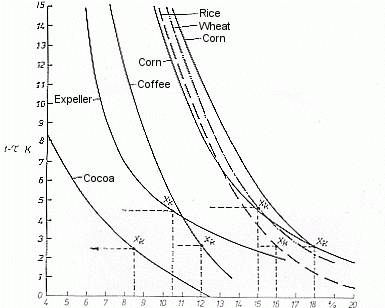Fig. 4 is a representation of sorption isotherms by plotting the temperature/dew point difference of the ambient air (Y-axis) against the water content of the product (X-axis), with indication of the critical water contents (Xk).
 |
| Figure 4: Temperature/dew point difference of the ambient air as a function of product water content Xk: critical point [27] |
In the case of container dry green coffee beans with a water content of 10% and a temperature of 20°C, the equilibrium moisture content is 69% according to the sorption isotherm; according to the Mollier h/x diagram, the dew point is 14°C and the temperature/dew point difference is thus 6°C.
If the green coffee beans have a critical water content of 12%, an equilibrium moisture content of 86% is established at 20°C and the dew point is 17.2°C, giving a temperature/dew point difference of 2.8°C. It is clear from the above that, from the outset, this coffee is exposed to the risk of mold growth, mustiness and fermentation and sweating will occur much earlier than in the case of container dry coffee.
The following conclusions may be drawn:
- the temperature/dew point difference is dependent upon a product's water content
- the lower is the product's water content, the greater is the temperature/dew point difference; the product is container dry
- the greater is the product's water content, the smaller is the temperature/dew point difference and the greater is its tendency to sweat on cooling and thus undergo disadvantageous changes, such as mold growth, mustiness and fermentation, postfermentation and self-heating.